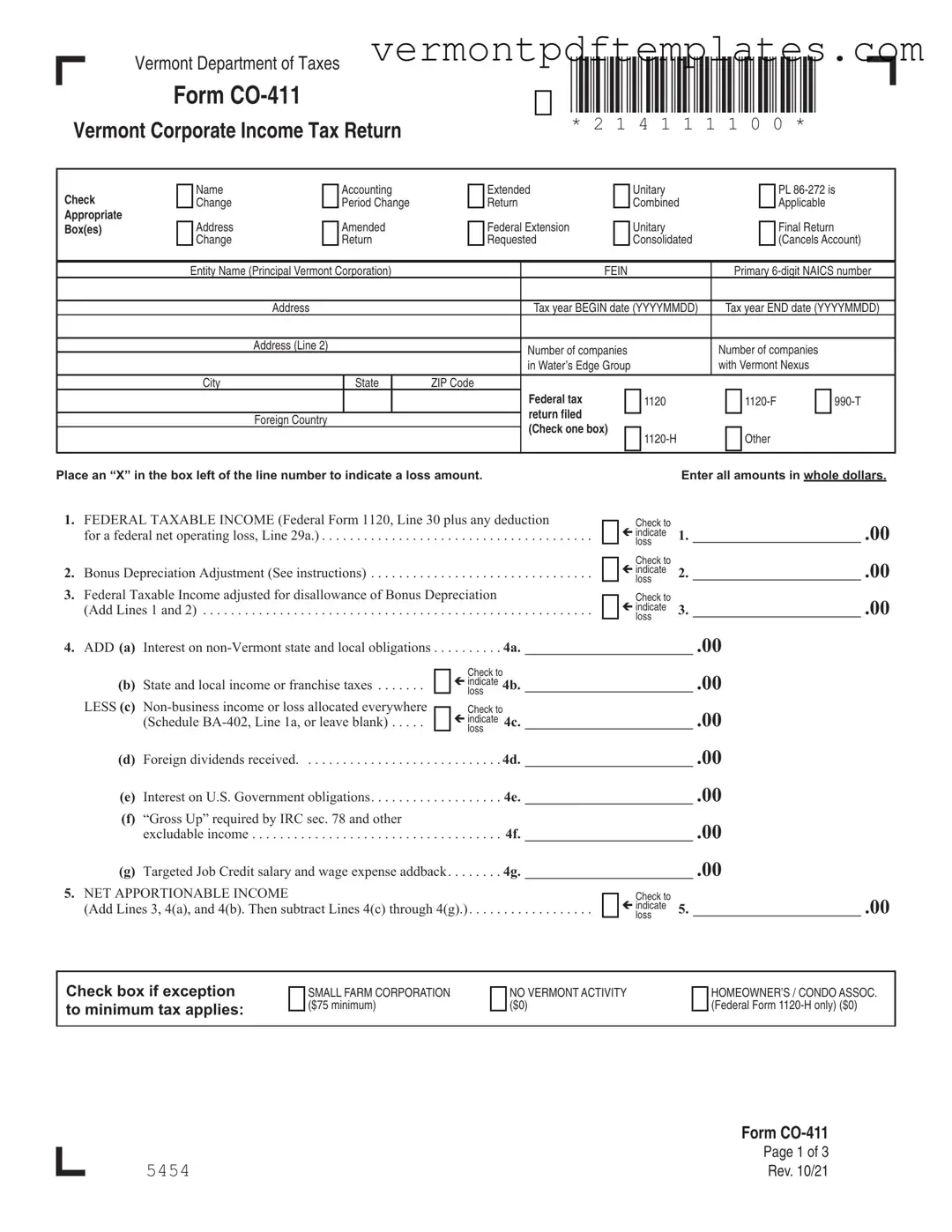The Vermont Corporate Income Tax Return (Form CO-411) shares similarities with the federal Form 1120, which is the U.S. Corporation Income Tax Return. Both forms are used by corporations to report their income, gains, losses, deductions, and credits, as well as to calculate their tax liability. The structure of both forms includes sections for reporting taxable income, adjustments, and tax computations. Additionally, both require the corporation's identifying information, such as name and Employer Identification Number (EIN), and they must be filed annually by the due date specified by the respective tax authorities.
Another document similar to the CO-411 is the Vermont Corporate Estimated Tax Payment Form (Form CO-414). This form is used by corporations to make estimated tax payments throughout the year based on their expected income. Like the CO-411, it is specific to Vermont tax requirements and is designed to ensure that corporations meet their tax obligations in a timely manner. Both forms require the corporation's identifying details and involve calculations related to the corporation's income, ensuring compliance with state tax laws.
The Form 990-T, Exempt Organization Business Income Tax Return, is also comparable to the CO-411 in that it is used by certain tax-exempt organizations to report unrelated business income. Both forms require detailed reporting of income and deductions, as well as calculations of tax liability. While the CO-411 is specific to corporate entities, the 990-T serves a different purpose for tax-exempt organizations, yet both documents share a similar structure and require the reporting of financial information to the tax authorities.
Form 1120-F, the U.S. Income Tax Return of a Foreign Corporation, is another document that resembles the CO-411. This form is used by foreign corporations engaged in business in the United States to report their income and calculate their tax liability. Both forms necessitate detailed financial disclosures and are designed to assess tax obligations. They require information about the corporation's income sources and deductions, making them essential for compliance with federal and state tax regulations.
The California Last Will and Testament form not only serves essential purposes for individuals planning their estates but also connects to broader legal frameworks within which various forms operate, such as different state return documents. Understanding these interactions can be beneficial, and for those interested in exploring comprehensive legal documentation, refer to All California Forms which provide a valuable resource for managing various legal requirements.
Lastly, the Vermont Sales and Use Tax Return (Form S-1) is similar to the CO-411 in that both are used to report tax liabilities to the Vermont Department of Taxes. While the CO-411 focuses on corporate income tax, the S-1 is specifically for sales and use taxes. Both forms require the reporting of financial data, including gross receipts and applicable deductions. They are integral to the tax compliance process within Vermont and help ensure that businesses meet their tax responsibilities to the state.
